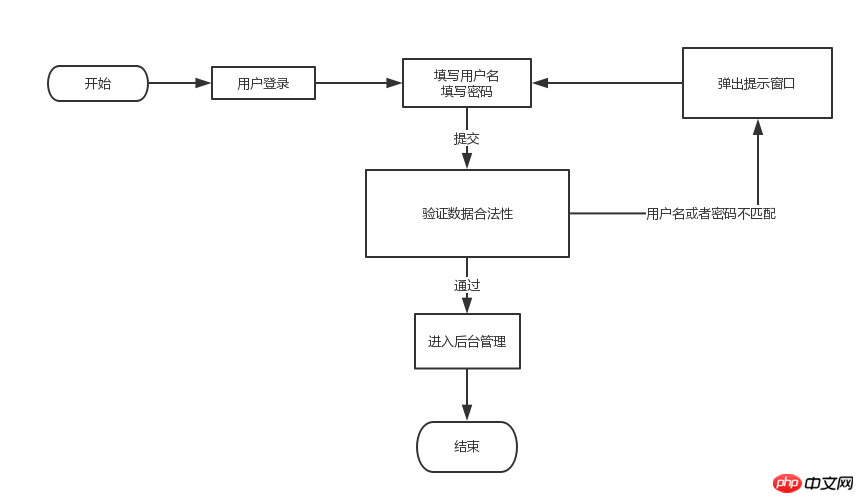
This article mainly introduces the relevant knowledge points about implementing user login in PHP (1). It has a certain reference value. Now I share it with you. Friends in need can refer to it
Content summary:
- User login process
- PHP to implement verification operation
- PHP to implement page jump
- PHP operation database extension
- Advantages and disadvantages of different methods
- Advantages of PDO operation
- Session operation method in PHP
# 1. Preparation work
1. Write a static login page
2. Set up the operating environment
Configure a virtual host based on the domain name under httpd-vhosts.conf,
In the local DNS hosts file Add domain name
3. Create database, create data tables, fields, test content
2. Login flow chart
3. Complete the case
Receive form data
Verify data legitimacy
Verify data legitimacy
Execute successful jump
3.1 Receive data
get will expose the data to the url parameters, while post is submitted to the server in a private way, so for some data with high security requirements, use the post method to submit
Predefined variables of PHP receiving form
$ _Get is used to receive data submitted by theGetmethod, including the form of URL
$ _ Post to receive Data
andpostat the same time
This step determines whether the data is empty, use PHP's empty() to determine
[PHP]
Copy Code
##?
bool empty( mixed $var )
Copy after login
|
Determines whether a variable is considered empty. When a variable does not exist, or its value is equal toFALSE, then it is considered not to exist. If the variable does not exist,empty()will not generate a warning.
3.3 Verify the rationality of the data
Determine whether the username and password submitted in the form are consistent with the The username and password of the data match. If they match, jump to the management homepage. As long as there is a mismatch, the user will be prompted with an error message and jump to the homepage
3.3.1 PHP connects to the database
First of all, mysql is a CS architecture software, so for PHP, connecting to the database is at the client level, and PHP needs to connect Database, you must enable the corresponding operation database extension, find the corresponding code in php.ini, remove the preceding semicolon and restart apche, for example
mysql extension extension=php_mysql.dll
3.3.2 Use mysql extension to connect to the databasemysql:
1. The earliest operating database API, simple to operate Easy to use, provides a process-oriented interface
2. However, this extension has been abandoned since PHP 5.5.0, and will be removed starting from PHP 7.0.0.
mysqli: MySQL enhanced version extension Excessive version
1. Supports process-oriented and object-oriented
2. Adds prepared statements, exceptions, transaction capture, etc.
3. Only supports mysql database. If you do not operate other databases, this is undoubtedly the best choice
PDO: PHP Data Objects
1. Supports prepared statements, exception capture, transactions and other operations, only supports oriented Object,
2. You only need to encapsulate a class, and you can freely switch the database to postgresql, or sqlServer and other databases without making too many adjustments on the program side. Its functions are similar to JDBC, ODBC, DBI, etc. Interface
Connect to the database mysql_connect("database address", "user name", "password"); Return a connection resource
Set the character set mysql_query(sql Command)
Send sql command to the database mysql_query("set names utf8");
Description: If the execution of update|delete|insert is successful, it returns true, if it fails, it returns false
If it is select If the execution is successful, the resource result set will be returned. If it fails, false will be returned.
The above is the detailed content of Knowledge points related to user login in PHP (1). For more information, please follow other related articles on the PHP Chinese website!




